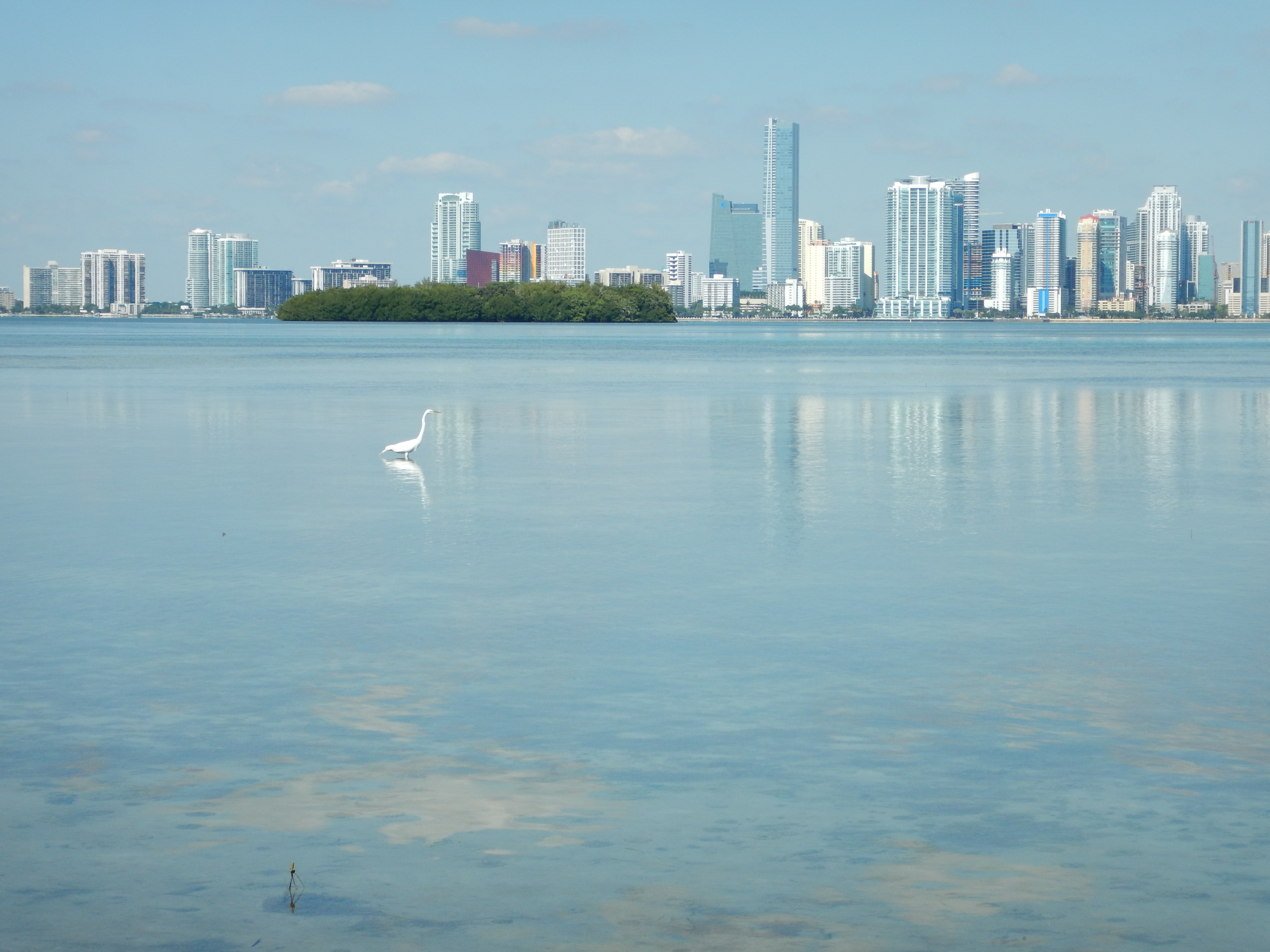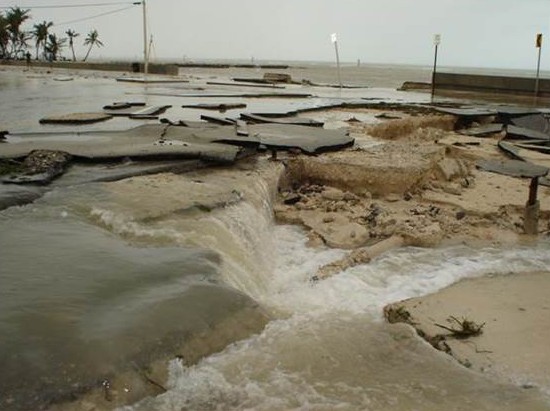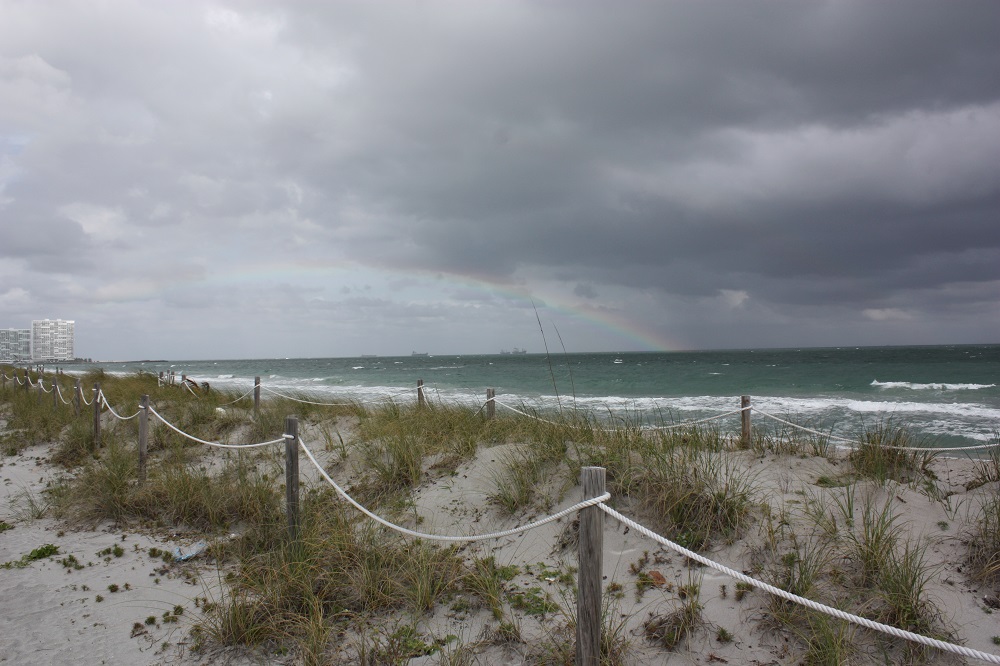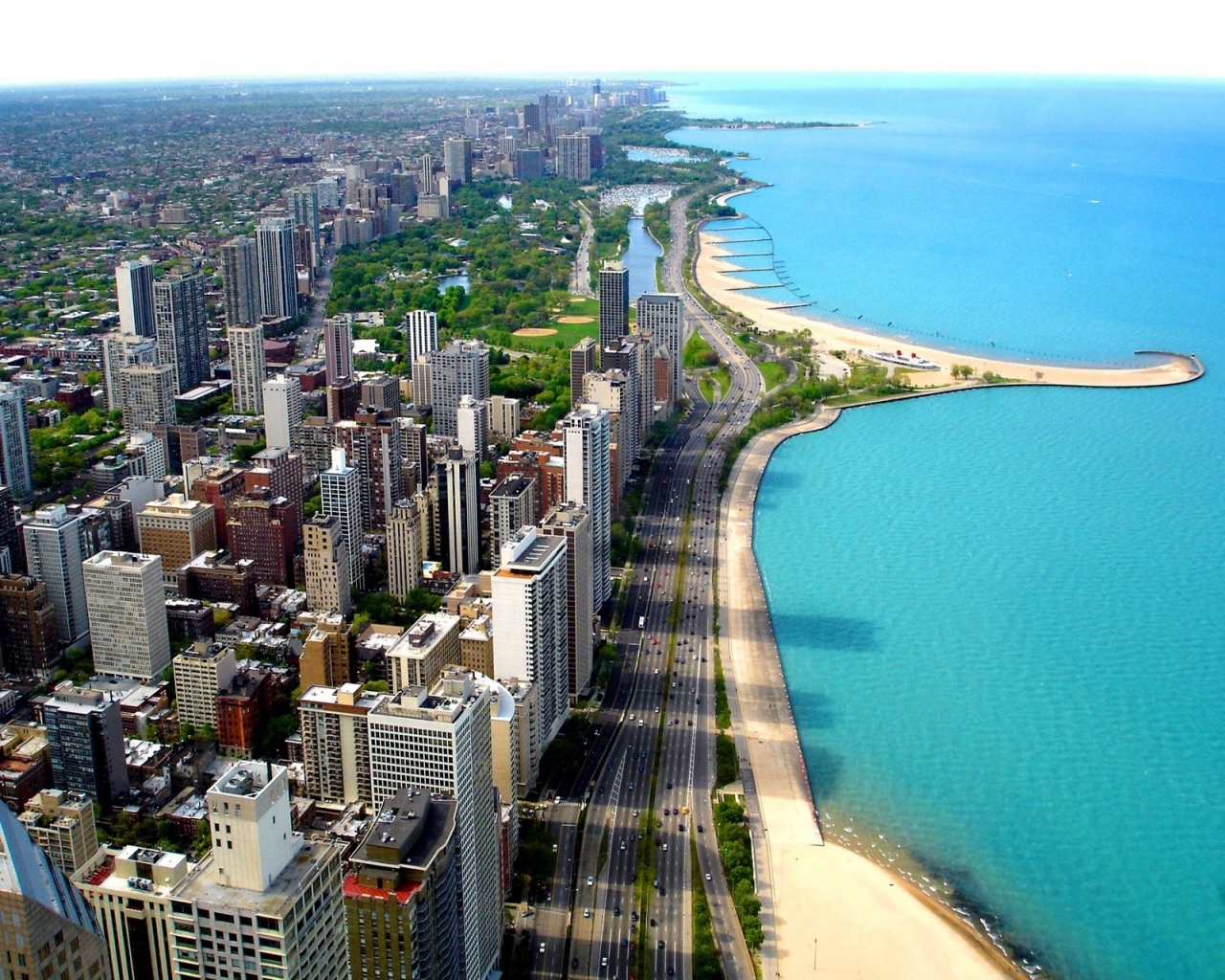Southeast Florida and the Florida Keys
The Nature Conservancy is working in partnership with the Southeast Florida Regional Climate Change Compact and others to identify and promote natural and nature-based approaches to coastal protection.
Southeast Florida and the Florida Keys are among the most vulnerable regions in the world when it comes to coastal storms and sea level rise. Fortunately, the region is also endowed with natural coastal defenses such as coral reefs, beaches, dunes and mangrove wetlands that help limit erosion and flooding while also providing wildlife habitat and valuable recreational opportunities for residents and visitors alike.
Coastal Resilience 2.0 is designed to help communities in the region assess the challenges they face today and explore opportunities to make nature a central part of the response to those challenges now and into the future.

The Southeast Florida Regional Climate Change Compact Staff Steering Committee at the 2013 Regional Climate Leadership Summit. Photo credit: Chris Bergh.
Overview
Assessments of the world’s developed areas with the most to lose from hurricanes and sea level rise place southeast Florida and the Florida Keys at the very top of their lists. Much infrastructure and many homes, businesses and natural areas from Key West to the Palm Beaches are already at or near sea level and vulnerable to flooding and erosion from waves and storm surges. The region had 5.6 million residents in 2010 – a population greater than that of 30 states – and for many of these people, coastal flooding and erosion are not only anticipated risks of tomorrow’s hurricanes, but a regular consequence of today’s highest tides.

King tide flooding on Las Olas Boulevard in the City of Fort Lauderdale. @Paul Krashefski
Socioeconomic
Billions of dollars in property value may be swept away in one storm or slowly degraded by creeping sea level rise. This double threat, coupled with a clearly accelerating rate of sea level rise and predictions of stronger hurricanes and population growth in the years ahead, has led to increasing demand for solutions and willingness on the parts of the public and private sectors to be a part of those solutions. Practical people and the government institutions that serve them want to know what those solutions are and what they will cost.

Infrastructure damage in Key West from Hurricane Wilma, October 2005. @Chip Kasper
Habitats and Species
Natural areas and native species in southeast Florida and the Florida Keys have successfully coped with storms and very slow sea level rise for thousands of years. Today though, with the sea rising more swiftly and development blocking many inland migration routes, the future of dozens of already rare species is in question. Some of these species – like the diminutive Key deer – are found nowhere else on the planet. Others, like sea turtles and shorebirds, are more widespread but the beaches they need for nesting are in constant jeopardy of erosion.

Florida Keys’ Key deer are on the federal endangered species list. @Larry Lipsky
Overview
The Nature Conservancy is working in partnership with the Southeast Florida Regional Climate Change Compact and others to promote nature-based approaches to coastal protection throughout Southeast Florida and the Florida Keys. These efforts include serving as a clearing house for best practices and other technical information and spotlighting successful projects that have already been completed. They also include cataloguing opportunities for new projects using a combination of scientific assessments, on-line decision support tools and local knowledge. A diverse suite of demonstration projects will be designed to advance the science and social acceptance of nature-based coastal defenses and champions will be sought for other projects throughout the region.

Key West’s storm surge and sea level rise vulnerability depicted by the Coastal Resilience mapping portal.
Natural Infrastructure
Traditional “grey infrastructure” such as seawalls and breakwaters is already common in the region but it is not the only option. Grey infrastructure will always have a place here and in some instances it is the only sensible choice, but it has significant drawbacks. These include negative impacts on the natural environment, high initial construction costs and high replacement costs.
By comparison, natural or nature-based coastal defenses can be cost-effective, self-maintaining and adaptable to changing conditions including sea level rise. They are designed and constructed to work in harmony with the natural environment or in many instances they simply are the environment. Southeast Florida’s coral reefs, beaches, dunes, wetlands and coastal forests are well known for the critical habitat they provide for wildlife and they are understood to be part of the diverse mix of attractions that anchor the region’s tourism and real estate-driven economy. Today, southeast Florida’s leaders are beginning to value the coastal protection services that natural features provide at no cost. They are working to secure the future availability of these services by investing in protection and restoration of marine and coastal natural areas and exploring nature-based constructed projects to shore up their front lines of defense.
Partners
- Florida Fish and Wildlife Conservation Commission
- South Florida Water Management District
- U.S. Fish and Wildlife Service
- Natural Capital Project
- NOAA Digital Coast
- University of Southern Mississippi
- Southeast Florida Regional Climate Change Compact
- Monroe County, Florida
- Miami-Dade County, Florida
- Broward County, Florida
- Palm Beach County, Florida
- Florida Atlantic University
- Florida Department of Environmental Protection’s Coral Reef Conservation Program
- National Oceanic and Atmospheric Administration’s Coral Reef Conservation Program
Resources
For the latest reports, publications and other resources on coastal resilience in Southeast Florida and the Florida Keys visit the Coastal Resilience Resource Library on the Conservation Gateway.





